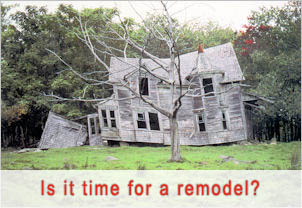
Key Takeaways
- Permits protect residents by guaranteeing adherence to structural and safety regulations, so there are fewer accidents and injuries.
- Permits help maintain or increase property value, as the deck is verified to be up to local building codes, thereby appealing to future buyers and avoiding chances of value loss.
- Remaining in compliance with county rules prevents homeowners from incurring legal and financial penalties, including the possibility of being ordered to remove or alter unpermitted structures.
- Detailed plans submitted well in advance and done in coordination with a local authority can save your deck project.
- Knowing and following local codes, like seismic and fire requirements, is important for legal and safe deck building, especially in areas susceptible to earthquakes or fires.
- By completing required inspections at every stage during construction, we are able to ensure long-term durability and compliance, while laying the groundwork for future insurance claims or property transactions.
Getting a permit is really important when building a deck in Contra Costa and Alameda counties. Permits help make sure that all deck projects follow local safety rules and building codes. They let officials check if the deck’s design and materials are safe for people, homes, and the environment. Inspectors look for things like strong foundations, safe railings, and correct distances from property lines and utilities.
If a homeowner skips getting a permit, they could face fines, delays, or even have to take the deck down. Having a permit can also help with insurance claims and selling the house, since buyers and real estate agents want proof of proper work. The next section will explain how the permit process works and why it matters for every project.
What Is a Deck Permit?
A deck permit is an official authorization from your local building department that allows you (or your contractor) to construct a deck that meets all applicable building codes and zoning regulations. In Contra Costa and Alameda Counties, the permit ensures your deck is:
- Structurally sound
- Compliant with fire safety codes
- Built to withstand seismic activity (critical in California)
- Not infringing on property setbacks or easements
- Safe for you, your family, and guests
In Contra Costa and Alameda counties, deck installation permits are essential for protecting you, your family, and your neighbors. They ensure that your deck is built safely and meets local regulations, making it strong enough for people and furniture. Permits guarantee the deck follows design plans, which helps prevent instability and collapse. Having the proper permits can also increase your property’s value for future sales and help resolve any neighbor disputes quickly. While it might seem like an extra step, obtaining a permit is crucial for safety and durability.
Permits are a given for the majority of work done in Contra Costa and Alameda counties. They’re not only legally necessary, but they serve a role in ensuring deck projects are safe, legal, and property-enhancing.
1. Ensuring Safety
A permit ensures that a deck is constructed sturdy enough to support the weight of occupants, chairs, and elements. Local officials review plans and inspect the deck to determine if it complies with safety regulations and appropriate load-bearing standards. These inspections reduce the risk of deck failure or other hazards.
Things like railings and footings get looked at during inspections. These aren’t just cosmetic—they’re meant to prevent falls and help stabilize the deck. Codes establish specific requirements for how high and sturdy railings must be, and how deep footers need to extend to prevent settling in various soils. For instance, a deck with a flimsy railing or shallow footings can collapse, causing injury or expensive damage. Permit rules educate homeowners on the most effective ways to build safely and why it all matters.
2. Protecting Value
A permitted deck demonstrates to buyers and banks that the deck was constructed properly. When selling a home, permit evidence can accelerate sales and allow sellers to fetch a premium. Unpermitted decks can reduce a property’s value or even prevent a sale if banks won’t sign off on a loan.
Adhering codes causes a home to fit in with its surroundings and meet community standards, which can increase the desirability of the entire neighborhood. Just plain quality construction, supported by permits, is a shrewd play for anyone who wants their home’s value to last.
3. Maintaining Compliance
Local regulations evolve and counties revise codes to address deficiencies or introduce new safety requirements. Permits are a means of demonstrating that a deck complies with these regulations. Permits require specific plans and information, so nothing is left to speculation.
Dealing with city or county offices clears up confusion over what is permitted. That keeps you out of trouble with fines, delays or even tear downs.
4. Securing Insurance
Insurance companies want evidence that decks were permitted. If a claim is made for injury or damage, the company will look for this evidence.
Claims for unpermitted decks may get denied. Talking with an agent before building helps. Permits are key for keeping insurance valid.
Understanding the Permit Process
Getting a building permit prior to adding a deck in Contra Costa and Alameda counties, for example, is more than a procedural formality—it’s a multi-step process that guarantees the project is compliant with all legal, safety, and quality standards. Each municipality has its demands, so knowing the right process can save you expensive delays and compliance headaches.
Steps to Obtain a Permit
- Investigate local permit needs and read guidelines on the city or county government web site.
- Fill out the joint permit application form including all relevant project information and signatures.
- Collect supporting documents such as construction drawings, site maps and engineering reports.
- File the application and pay its fee which varies depending on the size and complexity of the project.
- The building department will review the application — a process that can take anywhere from days to weeks.
- When your application is returned to you with requests for information or corrections from reviewers, respond expeditiously.
- Secure the permit and post it on site prior to initiation.
- Arrange required inspections at important construction milestones to maintain compliance.
Delays typically occur because of incomplete applications, missing documents or backlogs at the building department. Getting to know the local timeline and requirements can save you from fines or even a project shutdown.
Application
Filling out the joint permit application correctly is your initial path to approval. Even small mistakes or missing information can lead to processing delays and threaten the project timeline. You want to apply as soon as all your information is ready, and quite often this means waiting for test results or your landscape design. Be sure to provide all necessary project details—like the deck’s size, materials and site location—so that your review goes smoothly. Working with experienced contractors can help spot those missing details and make sure you fill out every section of the form.
Documentation
- Construction drawings with deck design, materials and dimensions (metric)
- Site plan indicating property lines and deck location
- Structural calculations, especially for decks requiring seismic reinforcement
- Documentation of ownership or permission from the owner
Everything has to be building department compliant. Checking local zoning codes verifies that your proposed deck satisfies spacing and land use regulations. Arranging your papers sensibly can cut down on review times and prevent silly mistakes from slipping through the cracks.
Review
The review phase is conducted by local building officials who review the application for code compliance, safety, and environmental impacts. Any comments or requests for clarification should be responded to promptly in order to maintain momentum. They evaluate based on such things as structural integrity and safety measures, and seismic reinforcement in areas with earthquakes. An early and proactive dialog with the building department can head off problems before they arise and increase the likelihood of approval.
Understanding Local Codes
When building a deck in Contra Costa or Alameda counties, you must follow strict local and state building codes designed to ensure structural safety, fire resistance, and neighborhood compliance. Each city or unincorporated area may enforce slightly different rules or amendments to the California Building Code, so it’s essential to consult your local building department before starting any work.
In California, most decks do require a permit—especially if the deck:
- Is attached to the home,
- Is more than 30 inches (76.2 cm) above grade at any point,
- Exceeds 200 square feet, or
- Serves as a platform for utilities like electrical or plumbing.
Freestanding decks that are under 30 inches high, less than 200 square feet, and not attached to a structure may be exempt in some municipalities, but this is not universal. Fire hazard severity zones, seismic codes, and wildland-urban interface regulations may also influence design and material requirements.
To avoid costly red tags or rebuilds, verify local code interpretations with your city or county building office—each may have its own permit thresholds, inspection timelines, and compliance standards.
Seismic Zones
County | Seismic Zone | Key Requirements |
Contra Costa | 4 | Must use reinforced footings, steel connectors |
Alameda | 4 | Bracing, anchor bolts, engineered fasteners |
Decks in these counties rest in high seismic zones. Which means additional measures for security, including such things as steel-reinforced footings and metal ties. Local codes demand these to prevent quake collapse. If you’re going to build, talk to a structural engineer early. They understand local codes and can assist with blueprints. Again, city offices have guidelines for seismic safety, and these can change, so be sure to check for updates.
Fire Codes
- Deck boards must be made from fire-resistant materials.
- Space between boards should be a minimum to avoid accumulation of debris.
- Decks need a certain distance from property lines and structures.
- Railings and supports need to resist ignition.
Fire is a real risk, especially during dry seasons. Most localities say you have to use materials that slow or stop flames. This means things like composite boards or treated wood. Don’t forget about spacing—small gaps between boards help keep leaves from piling up and catching fire. Local fire departments can provide a list of approved products and methods. If your deck is close to a house or fence, there are extra rules, so always ask before you start.
Zoning Rules
Zoning indicates where a deck is permissible. Most jurisdictions determine how close decks can be to property lines, roads or neighbors. These “setbacks” avoid future conflicts and keep the street looking tidy.
Decks, for example, tend to have height and square footage restrictions. If you build too high or cover too much yard, you gotta take it down. Local zoning establishes regulations for lighting and privacy screens as well. If you’re not sure, call the planning office. They answer questions, even before you file plans.
The Key Checkpoint for Inspections
Inspection is big during deck installation in Contra Costa and Alameda counties. This stage verifies local rules compliance and safety. Unpermitted projects typically attract closer inspections. Preparing for every inspection step staves off tardiness and makes for a seamless build.
Foundation
The initial giant leap is ensuring the base camp is inspected. Footings have to ensure that they meet local codes for strength and safety, particularly because decks tend to have a high load capacity. Soil problems, such as inadequate drainage or weak soil, must be addressed prior to construction. All checks should be put in writing for evidence, which assists if issues arise down the road.
Framing
Framing inspections examine the skeleton of the deck. Every beam and joist needs to be the right size and use the proper material. Inspectors ensure they’re stable and don’t have any vulnerable spots. If it’s wrong, fix it immediately so there aren’t any hold ups. Maintaining contact with the inspector clarifies any confusion and facilitates the process.
Final
This final pass inspects the entire project. All work to correspond with plans on file. The inspector leaves an inspection card when everything is completed and passed, indicating the deck is safe and legal. Small fixes might arise, but these should be addressed prior to people using the deck.

Dangers of Building Without Permits
Building a deck without required permits in Contra Costa and Alameda counties can expose homeowners to financial, legal and practical risks. It’s because these problems impact long-term property value and safety as well, making adherence to local building codes necessary.
Financial Penalties
Building a deck without proper permits in Contra Costa or Alameda counties can result in significant financial consequences. Cities and counties across California have the authority to issue fines and require remediation when unpermitted work is discovered. Here’s what you should know:
Common Financial Consequences
Item | Estimated Cost (USD) |
Initial Code Violation Fine | $100–$500 per day (varies by city, may start at $350–$600) |
Ongoing or Accrued Penalties | Up to $1,000/day in some jurisdictions (cumulative fines can exceed $2,000 if ignored) |
Retroactive (After-the-Fact) Permit | 2–3x normal permit cost: $500–$2,500+ |
Mandatory Inspections or Upgrades | $1,000–$5,000+, depending on code violations |
Insurance Premium Increase or Denial | Varies — insurers may increase premiums, exclude coverage, or deny claims |
Fines stress project budgets, particularly when unexpected. Insurance rates might rise as well if the insurer discovers the non-compliance, driving up costs in the long term.
Legal Orders
Local authorities could even order to stop work or demolition of unpermitted decks. Cease-and-desist notices can shut projects down mid-way, requiring owners to take the structure down or make expensive modifications. Such lawsuits tend to translate to extended project delays and additional legal fees. It’s always smart to consult a legal expert early to head off or solve these problems. To make matters worse, if a deck gets destroyed, the county might not allow it to be rebuilt – particularly if it was never permitted to begin with.
Resale Complications
Listing a home with unpermitted work is usually tricky. Buyers could be afraid of liability, or banks might refuse to lend money on the property. This can decrease your pool of potential buyers and decrease your property’s value. Sellers might be forced to disclose the unpermitted work, resulting in hard-ball negotiations or price adjustments. Others, the appraiser may value the home lower, or require repairs, before the sale can move forward.
Long-Term Non-Compliance
Building a deck without a permit can lead to serious problems. If the deck isn’t up to code, it might be unsafe and hard to fix. If the authorities find out, homeowners may need to pay their tenants to move out, which can cost anywhere from $5,000 to over $15,000. In some cases, tenants could even sue for back rent if their home is unsafe to live in. Buying a property with a deck that doesn’t have the right permits can create more legal and money issues.
Working with Other Organizations
Constructing a deck in Contra Costa or Alameda County involves much more than just hiring a contractor or drafting blueprints. The process requires close collaboration with a variety of government agencies, each with their own specific requirements and approval procedures. Here’s what homeowners should be prepared for:
- Local building departments are the primary point of contact.
These departments regulate size, height, and setback limits to ensure that your deck fits local zoning and community standards. Always check your city or town’s specific building codes before moving forward—what’s acceptable in one jurisdiction may be denied in another just a few miles away. - Direct communication with agency personnel is often necessary.
Permit forms can be confusing or outdated, and guidelines sometimes change. Reaching out to staff for clarification can save time and avoid mistakes later in the process. - Environmental considerations may require additional approvals.
If your deck affects natural features like trees, creeks, or wetlands, you may need to work with state or federal environmental agencies. These bodies often require added documentation to protect green spaces—for example, demonstrating how you’ll control runoff or prevent erosion near protected waterways. - Expect delays during the review process.
Once you submit your plans, responses can take anywhere from a few days to several weeks, depending on the agency’s workload and the complexity of your project. You may also need to revise and resubmit plans based on feedback regarding materials, structural support, or drainage. - Inspections are ongoing and can impact your timeline.
Inspectors will visit during construction to verify that work aligns with the approved plans. If anything is out of compliance, construction may be paused until the issue is corrected. - Proactive communication helps minimize setbacks.
Starting conversations early, submitting complete information, and responding quickly to follow-up questions reduces the likelihood of approval delays. Sometimes, compromises—like adjusting your deck’s size—are needed to meet requirements and move forward.
Working with these agencies can be time-consuming, but a cooperative and informed approach makes the process much smoother.
Conclusion
Permits create the roadmap to safe and enduring decks in Contra Costa and Alameda counties. They get you in line with regulations, avoid penalties, and keep your project moving. A permit demonstrates that you care about safety, quality work and your neighbors. Local codes can change quickly, so permits keep you current. Skip a permit, pay big costs or tear down your deck.
Inspectors want to identify issues ahead of time, not hold you back. Agencies might request plans or inspections, but every stage creates confidence and protects you. Want your deck to stand the test of time and increase your home’s value? Begin with the right permit. Contact us with your plans or questions, and receive actual assistance from local experts.
Frequently Asked Questions
1. Why do I need a permit for deck installation in Contra Costa and Alameda counties?
Permits make sure your deck complies with safety and building codes. They safeguard you — and your property and potential future buyers — from expensive issues or legal problems.
2. What happens if I build a deck without a permit?
Unpermitted decks can result in fines, removal or issues selling your home. Insurance claims can be denied as well if damage occurs.
3. How do I apply for a deck permit in these counties?
You submit plans and an application to your local building department. They inspect your paperwork, verify it’s to code, and give you the ok if it is.
4. What local codes affect deck construction?
Decks have to adhere to county and city building codes. These include structural safety, materials, height and placement. Codes can vary between Contra Costa and Alameda counties.
5. Why are inspections required during deck installation?
Inspections verify that your deck is constructed safely and up to code. They inspect the foundation, framing and final construction before approving the work.
6. Can I start building before getting a permit?
No. You have to wait for approval before any work commences. Building first invites fines and additional fees to bring non-compliant work up to code.
7. Do deck permits involve other agencies besides the building department?
Yes. Certain projects might necessitate inspections from fire, planning, or environmental departments. This makes certain your deck is compliant with all local and regional codes.
Your Dream Deck Installed by Mares & Dow Construction & Skylights – Let’s Build a Beautiful Outdoor Space Together
Expand your living space and elevate your outdoor lifestyle with a custom deck designed and installed by Mares & Dow Construction & Skylights. With more than 40 years of construction experience, we specialize in high-quality deck installations that blend style, durability, and functionality.
Whether you’re picturing a peaceful retreat, an entertainment hub, or a seamless indoor-outdoor transition, we tailor each deck to fit your home’s architecture and your personal vision.
Key benefits of our deck installation services include:
• Creating a welcoming outdoor area perfect for relaxing, dining, or hosting
• Boosting property value with expert craftsmanship and quality materials
• Offering long-lasting, weather-resistant solutions customized to your space
Proudly serving Contra Costa County, including Alamo, Danville, Orinda, Martinez, and San Ramon, Mares & Dow Construction & Skylights is your trusted deck-building partner for timeless design and long-term performance.
Contact Mares & Dow Construction & Skylights today for a free, no-obligation quote and let’s build your dream deck together.
Disclaimer
The materials available on this website are for informational and educational purposes only and are not intended to provide construction, legal, or professional advice. You should consult with a qualified general contractor or industry professional for advice concerning any specific construction project, remodeling plan, or structural concern. Do not act or refrain from acting based on any content included on this site without seeking appropriate professional guidance. The information presented on this website may not reflect the most current building codes, regulations, or industry best practices. No action should be taken in reliance on the information on this website. We disclaim all liability for actions taken or not taken based on any or all of the contents of this site to the fullest extent permitted by law.







 based on
based on 

